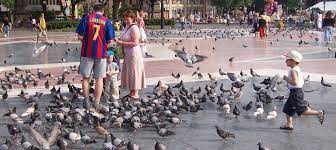
by Pigeon Patrol | Apr 18, 2021 | history of pigeons, Pigeons
Authorities in the Spanish city of Cádiz have come up with a plan for their booming pigeon population – relocating some 5,000 birds.
The city is plagued by thousands of the birds and their associated waste – but officials did not want to poison them.
Instead, the plan is to capture thousands of pigeons and relocate them hundreds of miles away in a different region – and hope they do not return.
Local officials said it was a “more respectful and sustainable” solution.
Speaking to local newspaper Diario de Cádiz, councillor Álvaro de la Fuente said “managing the population of existing pigeons does not imply the eradication of them within the urban area.”
Instead, he said a “logical balance” between the birds, humans, and other city-dwelling species was the goal.
The common pigeon is known for its location awareness – the famous homing pigeon used to carry war-time messages is a variant of the species.
But unlike their trained counterparts, the wild birds are often happy to settle in one local area – and officials in Cádiz hope that will be the case when all 5,000 pigeons are placed in their new home.
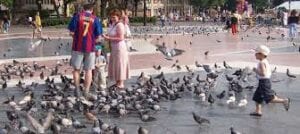
The thousands of birds to be relocated will be trapped, catalogued, and tested before being carried at least 170 miles (275km) away for release. Every bird will also get a health check along the way.
But pigeons breed quickly – so the city plans to print thousands of leaflets reminding the public not to overfeed the remaining flock, which helps to inflate the population.
In London’s Trafalgar Square, where the tradition of deliberately feeding the birds was immortalised in Disney’s Mary Poppins film, the birds flocked in great numbers until the early 2000s.
A combination of banning the feed sellers and a hefty fine on those who feed the flock anyway was part of the solution – while the introduction of hawks was another.
Today, a professional falconer accompanies a Harris hawk or peregrine falcon to Trafalgar Square several times a week – a natural predator which warns off the less welcome, smaller bird.
The same technique is used at a number of other London landmarks including BBC Broadcasting House and the Wimbledon tennis complex. It scares the birds away from one area and disperses them more widely – but does not affect the actual population much.
Source
Pigeon Patrol Products & Services is the leading manufacturer and distributor of bird deterrent (control) products in Canada. Pigeon Patrol products have solved pest bird problems in industrial, commercial, and residential settings since 2000, by using safe and humane bird deterrents with only bird and animal friendly solutions. At Pigeon Patrol, we manufacture and offer a variety of bird deterrents, ranging from Ultra-flex Bird Spikes with UV protection, Bird Netting, 4-S Bird Gel and the best Ultrasonic and audible sound devices on the market today.
Voted Best Canadian wholesaler for Bird Deterrent products ten years in a row.
Contact us at 1- 877– 4– NO-BIRD, (604) 585-9279 or visit our website at www.pigeonpatrol.ca
Pigeon/Pigeon Patrol / Pigeons Roosting / Vancouver Pigeon Control /Bird Spikes / Bird Control / Bird Deterrent / Pigeon Deterrent? Surrey Pigeon Control / Pest /Seagull deterrent / Vancouver Pigeon Blog / Birds Inside Home / Pigeons in the cities / Ice Pigeons/ What to do about pigeons/ sparrows , Damage by Sparrows, How To Keep Raccoons Away, Why Are Raccoons Considered Pests/ De-fence / Pigeon Nesting/ Bird Droppings / Pigeon Dropping/ woodpecker control/ Professional Bird Control Company/ Keep The Birds Away/ Birds/rats/ seagull/pigeon/woodpecker/ dove/sparrow/pidgeon control/pidgeon problem/ pidgeon control/flying rats/ pigeon Problems/ bird netting/bird gel/bird spray/bird nails/ bird guard
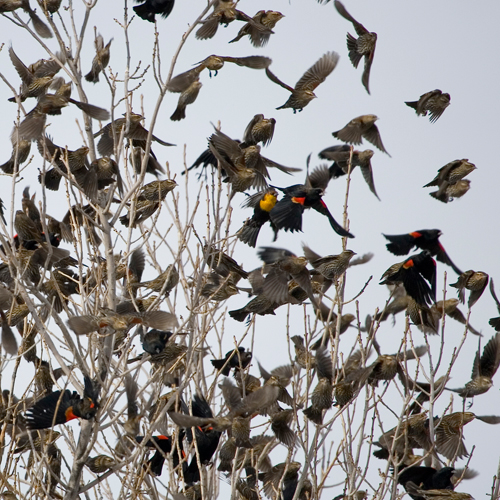
by Pigeon Patrol | Feb 9, 2021 | Animal Deterrent Products, Bird Deterrent Products, Bird Law, Bird Netting, Bird Spike, Bird Spikes, Pigeons, Raccoons
What Bird Are Considered To Be A Pest?
Pest Bird
The Canada goose, pigeons, starlings, seagulls and house sparrows are the most common pest birds in our area. Pest birds are responsible for millions of dollars of damage every year. Bird droppings are highly caustic and eat away at roofing and other structural material. They contaminate food, water, and anything they touch. They release airborne spores that can be inhaled by customers, workers and family members. They also carry disease-causing parasites, fleas, ticks, mites, lice and other biting insects.
Are They Dangerous
Pigeon’s droppings and nests are of medical concern because they have over 50 diseases associated with them. Some of these include histoplasmosis, chlamyiosis, and salmonella. Their droppings are also acidic and may mar many different surfaces. The Canada goose is aggressive at protecting its territory and airport safety is jeopardized as many airport bird strike collisions result from geese roosting in open areas near airports. House sparrows and starlings can be a major nuisance in urban areas due to their nesting, eating, and living habits. Gutters and drainage pipes clogged with sparrow or starling nests can back up and cause extensive water damage. Furthermore, numerous fires have been attributed to electrical shorts from machinery housing sparrow or starling nests.
How To Get Rid Of Them
Controlling these birds can be difficult. That’s why our services may include a combination of products and techniques. Corrective landscaping, barriers, and exclusion methods may all be used to rid your home or business of these nuisance birds. source
Can You DIY?
Due to the complexity of treatment and the time required, pigeons, Canada geese, and house sparrows are generally not a pest many people have success in eradicating on their own. Beware when purchasing products online, as many are not effective. Pesticides are not typically effective against birds and can be harmful to people and pets if they are misused or mixed improperly.
How Soon Can We Come?
Our customers are our top priority. The Pigeon Patrol team will help you as soon as we can
Are These Treatments Safe?
Pigeon Patrol uses the least amount of materials possible while still resolving the problem. We utilize natural products, baits, and mechanical means as a form of treatment whenever possible keeping you, your family, employees, and customers safe.
How To Prevent For The Future
Pest bird problems can be difficult to prevent. Many of our clients choose year-round service against pest birds for the protection of their home or business.
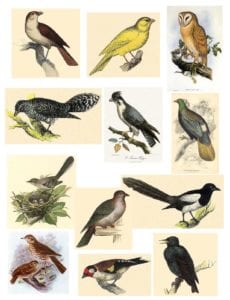
Pigeon Patrol Products & Services is the leading manufacturer and distributor of bird deterrent (control) products in Canada. Pigeon Patrol products have solved pest bird problems in industrial, commercial, and residential settings since 2000, by using safe and humane bird deterrents with only bird and animal friendly solutions. At Pigeon Patrol, we manufacture and offer a variety of bird deterrents, ranging from Ultra-flex Bird Spikes with UV protection, Bird Netting, 4-S Gel and the best Ultrasonic and audible sound devices on the market today.
Contact us at 1- 877– 4– NO-BIRD, (604) 585-9279 or visit our website at www.pigeonpatrol.ca
Pigeon / Pigeon Patrol / Pigeons Roosting / Vancouver Pigeon Patrol / Bird Control / Surrey Pigeon Control / Pest / Vancouver Pigeon Blog / Birds Inside Home / Pigeons in the cities / Ice Pigeons/ What to do about pigeons/ most common types of sparrows , Damages Caused by Sparrows, How To Keep Raccoons Away, Why Are Raccoons Considered Pests?de-fence, Pigeon Nesting and Breeding Patterns and Behavior What Do I Do With a Bird Trapped in My Wall? Professional Bird Control Company Keep The Birds Away From Your Business Why Are Raccoons Considered Pests?
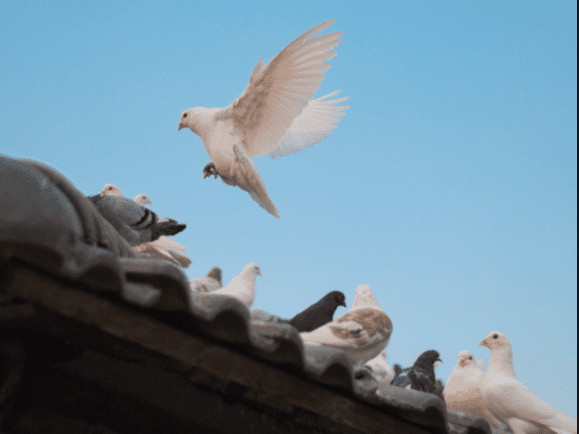
by Pigeon Patrol | Feb 9, 2021 | Animal Deterrent Products, Bird Deterrent Products, Bird Law, Bird Netting, Bird Spike, Bird Spikes, Pigeon Patrol's Services, Pigeon Spikes, Pigeons, UltraSonic Bird Control
Bird control technicians’ nightmare – what to do when we are asked to do the impossible? The straight answer is that there is really nothing we can do when pigeons land on your roof, but there is much more to know.
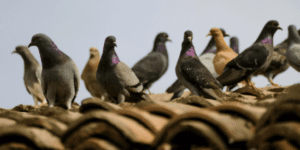
Many customers ask: “Why? Why my roof, what’s so special about my roof that they have to land there?” Believe it or not you are asking the right question: Why? Once you understand why, you will also understand why is it hard to provide a solution in this situation.
Almost always, the primary cause of such problem is the availability of food nearby, plenty of it on a regular basis. Probably someone is feeding the birds or there are lots of garbage in the area or open garbage bins/containers. They could also nest or roost in close proximity and simply they use your roof as a comfy perching spot having a nice vantage point over their feeding area.
What could we do? Install hundreds of feet of spikes on your roof? Put up scary owls? Maybe speakers on the roof peak? Unfortunately none of them are viable. It is simply not feasible to protect large, flat (horizontal or sloped) roof surfaces, such as the entire roof of a victorian house for example.
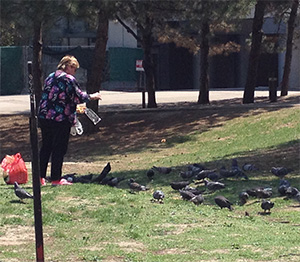
Lady feeding the pigeons in College Park – every day.
First, we need to find ways of eliminating food and water sources nearby. Then we must find their nesting/roosting areas – which will most likely be on another property, otherwise you would see them somewhere else on your house/building, (in which case it would be very easy to resolve the issue,– that provides sheltered structural configurations to establish a protected area where they can stay at night. Pigeons don’t see well at night and usually they go to their roosting spots before nightfall and stay there during the night.
If protecting these areas are not possible (because they are on someone else’s property) we can look at strategically installing Bird Spikes or exclusion Bird Netting or the combination of both, maybe Electric Tracks at critical areas to discourage them from landing on your roof.
You can see now that there aren’t any straightforward solutions in the case of house roof tops and that it is very time consuming to address the issue holistically. The best thing you can do is to call up a professional and get an opinion, you might have missed something that a pro will notice that could help resolve the issue.
source
Some other options for bird repellent would be the Ultrasonic Sound Repellent which makes noises that can only be heard by pigeons and scare them off with the sound or the laser beam which can be activated by movement or you can time when these lasers come on. These lasers are too strong for the pigeons vision to handle and they will fly elsewhere. You can purchase these here : https://www.pigeonpatrol.ca/product/laser/
Pigeon Patrol Products & Services is the leading manufacturer and distributor of bird deterrent (control) products in Canada. Pigeon Patrol products have solved pest bird problems in industrial, commercial, and residential settings since 2000, by using safe and humane bird deterrents with only bird and animal friendly solutions. At Pigeon Patrol, we manufacture and offer a variety of bird deterrents, ranging from Ultra-flex Bird Spikes with UV protection, Bird Netting, 4-S Gel and the best Ultrasonic and audible sound devices on the market today.
Contact us at 1- 877– 4– NO-BIRD, (604) 585-9279 or visit our website at www.pigeonpatrol.ca
Pigeon / Pigeon Patrol / Pigeons Roosting / Vancouver Pigeon Patrol / Bird Control / Surrey Pigeon Control / Pest /
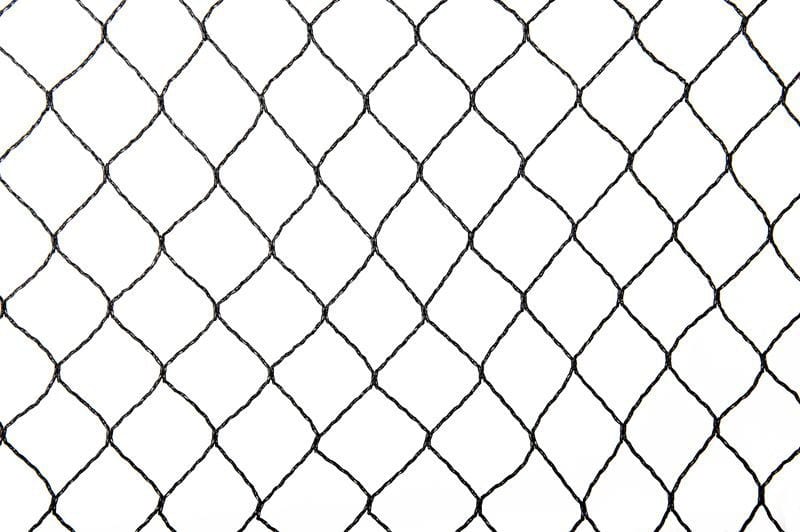
by Pigeon Patrol | Feb 9, 2021 | Animal Deterrent Products, Bird Deterrent Products, Bird Netting, Columbidae, Doves, Pigeon Predators, Pigeons
Pigeon Patrol Bird Netting
BUY HERE : https://www.pigeonpatrol.ca/product/mesh-bird-exclusion-netting/
Bird netting is one of the most common methods used to deter birds from a variety of properties and structures. Check out these tips to make bird netting installation a breeze.
- Avoid making these mistakes when installing bird netting
- Follow these tips to make bird netting a breeze
Bird netting is one of the most common methods used to deter unwanted birds from a variety of properties and structures. While this method may seem easy for DIY property protection, it can become a time-consuming chore if not done properly. It’s also important to properly install the netting in a way that does not cause damage to materials, properties or birds. Here are some bird netting do’s and don’ts to help make the process a bit easier.
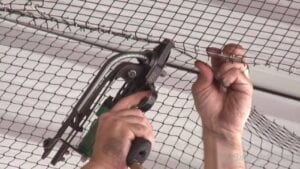
NO:
Assume All Bird Netting is the Same
Bird nettings come in a variety of sizes, weights and materials. Before making a purchase, make sure you are choosing the appropriate netting for your needs. Questions to ask when browsing bird netting include:
- What type of property are you protecting? Net types will vary based on different types of properties. The kind of nettings used for buildings and structures is not the same as netting used for gardening or crop protection.
- What bird species are you trying to deter? Weights, materials and mesh sizes will differ depending on the size of birds you are trying to deter.
Install on a Windy Day
It can be tricky to install bird netting on even the calmest of days. The long, thin nets can easily become tangled or knotted if not handled properly. Trying to install netting when it’s windy will make the process much more difficult than if you waited for a day with less wind.
Expect a Permanent Fix
While netting will prevent birds from easily accessing your properties, don’t expect the fix to last forever. Over time, netting will deteriorate, leaving holes or gaps that pest birds can easily slip through. For long-lasting results from bird netting, be prepared for regular maintenance and updates.
YES:
Research
Before you begin, research the best type of bird netting for your needs. Compare the types of netting, sizes, weights and equipment needed to install. Once you’ve found the right type, shop around to find the best-priced deal.
Stay Organized
As you begin installing your bird netting, make sure to stay organized. Stretch out the net to full size, find all the corners and determine which side is up. This will help to minimize tangles and will make the process a lot easier and manageable.
 Give Yourself Inside Access
Give Yourself Inside Access
If using bird netting to protect your fruits or vegetables, remember to make a small access hole for harvest. While the net is built to keep birds out, you’ll still need to be able to get in to pick or tend to your plants. Make an incision large enough for you to fit your hand through to access whatever crop you are harvesting.
SOURCE
Pigeon Patrol Products & Services is the leading manufacturer and distributor of bird deterrent (control) products in Canada. Pigeon Patrol products have solved pest bird problems in industrial, commercial, and residential settings since 2000, by using safe and humane bird deterrents with only bird and animal friendly solutions. At Pigeon Patrol, we manufacture and offer a variety of bird deterrents, ranging from Ultra-flex Bird Spikes with UV protection, Bird Netting, 4-S Gel and the best Ultrasonic and audible sound devices on the market today.
Contact us at 1- 877– 4– NO-BIRD, (604) 585-9279 or visit our website at www.pigeonpatrol.ca
Pigeon / Pigeon Patrol / Pigeons Roosting / Vancouver Pigeon Patrol / Bird Control / Surrey Pigeon Control / Pest / Vancouver Pigeon Blog / Birds Inside Home / Pigeons in the cities / Ice Pigeons/ What to do about pigeons/ most common types of sparrows , Damages Caused by Sparrows, How To Keep Raccoons Away, Why Are Raccoons Considered Pests?de-fence, Pigeon Nesting and Breeding Patterns and Behavior What Do I Do With a Bird Trapped in My Wall? Professional Bird Control Company Keep The Birds Away From Your Business Why Are Raccoons Considered Pests?
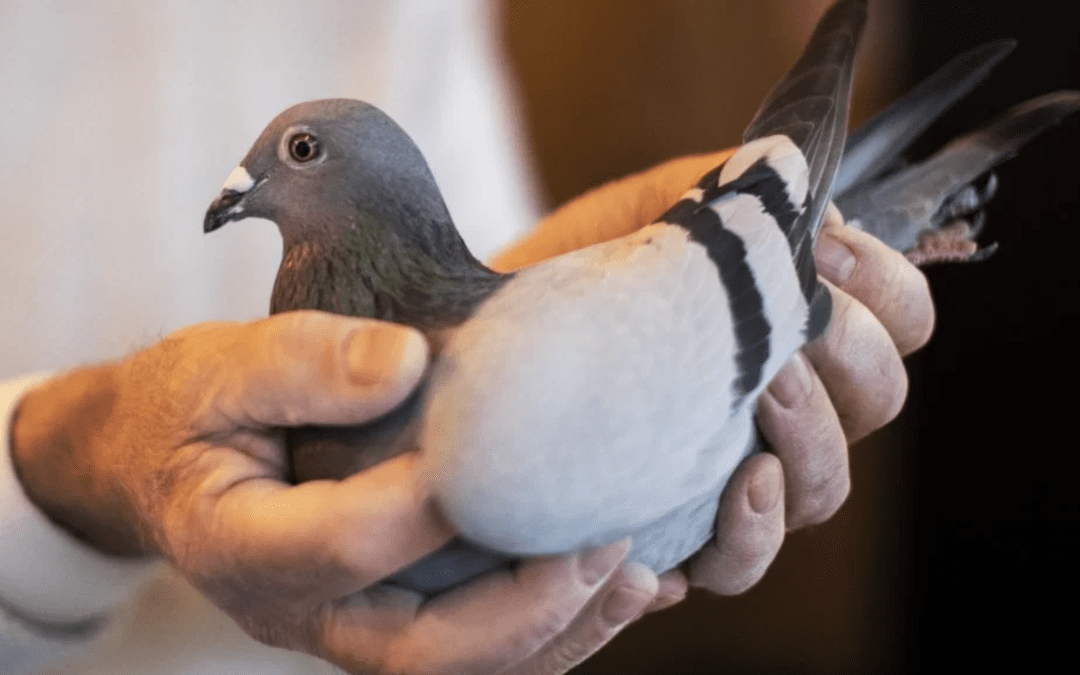
by Pigeon Patrol | Dec 27, 2020 | Bird Deterrent Products, Bird Spikes, Columbidae, Doves, Pigeons, Pigeons in the News
Facts About the Pigeon

- Pigeons are incredibly complex and intelligent animals. They are one of only a small number of species to pass the ‘mirror test’ – a test of self recognition. They can also recognise each letter of the human alphabet, differentiate between photographs, and even distinguish different humans within a photograph.
- Some pigeons can pass the mirror test after training in the prerequisite behaviors. In 1981, American psychologist B. F. Skinner found that pigeons are capable of passing a highly modified mirror test after extensive training. In the experiment, a pigeon was trained to look in a mirror to find a response key behind it, which the pigeon then turned to peck to obtain food. Thus, the pigeon learned to use a mirror to find critical elements of its environment. Next, the pigeon was trained to peck at dots placed on its feathers; food was, again, the consequence of touching the dot. The latter training was accomplished in the absence of the mirror. The final test was placing a small bib on the pigeon—enough to cover a dot placed on its lower belly. A control period without the mirror present yielded no pecking at the dot. When the mirror was revealed, the pigeon became active, looked in the mirror and then tried to peck on the dot under the bib. However, untrained pigeons have never passed the mirror test.
- Pigeons are renowned for their outstanding navigational abilities. They use a range of skills, such as using the sun as a guide and an internal ‘magnetic compass’. A study at Oxford University found that they will also use landmarks as signposts and will travel along man-made roads and motorways, even changing direction at junctions.
- Pigeons are highly sociable animals. They will often be seen in flocks of 20-30 birds.
- Pigeons mate for life, and tend to raise two chicks at the same time.
- Both female and male pigeons share responsibility of caring for and raising young. Both sexes take turn incubating the eggs and both feed the chicks ‘pigeon milk’ – a special secretion from the lining of the crop which both sexes produce.
- Pigeons have excellent hearing abilities. They can detect sounds at far lower frequencies than humans are able to, and can thus hear distant storms and volcanoes.
- Despite the social perception as dirty and disease-ridden, pigeons are actually very clean animals and there is very little evidence to suggest that they are significant transmitters of disease.
- Pigeons and humans have lived in close proximity for thousands of years. The first recordings of this date back to Mesopotamis, modern Iraq, in 3000bc.
- Although pigeon droppings are seen by some as a problem in modern society, a few centuries ago pigeon guano was seen as extremely valuable. It was viewed as the best available fertiliser and armed guards would even stand by dovecotes (pigeon houses) to stop others taking the droppings.
- Pigeons can fly at altitudes up to and beyond 6000 feet, and at an average speed of 77.6 mph. The fastest recorded speed is 92.5 mph.
- Pigeons are fed by many members of different religions including Muslims, Hindus and Sikhs for spiritual reasons. Some older Sikhs will ceremoniously feed them in honour of Guru Gobind Singh, a high priest who was renowned as a friend to pigeons.

About Pigeon Patrol:
Pigeon Patrol Products & Services is the leading manufacturer and distributor of bird deterrent (control) products in Canada. Pigeon Patrol products have solved pest bird problems in industrial, commercial, and residential settings since 2000, by using safe and humane bird deterrents with only bird and animal friendly solutions. At Pigeon Patrol, we manufacture and offer a variety of bird deterrents, ranging from Ultra-flex Bird Spikes with UV protection, Bird Netting, 4-S Gel and the best Ultrasonic and audible sound devices on the market today.
Contact us at 1- 877– 4– NO-BIRD, (604) 585-9279 or visit our website at www.pigeonpatrol.ca
Pigeon / Pigeon Patrol / Pigeons Roosting / Vancouver Pigeon Patrol / Bird Control / Surrey Pigeon Control / Pest / Vancouver Pigeon Blog / Birds Inside Home / Pigeons in the cities / Ice Pigeons/ What to do about pigeons/ most common types of sparrows , Damages Caused by Sparrows, How To Keep Raccoons Away, de-fence, Facts About the Pigeon
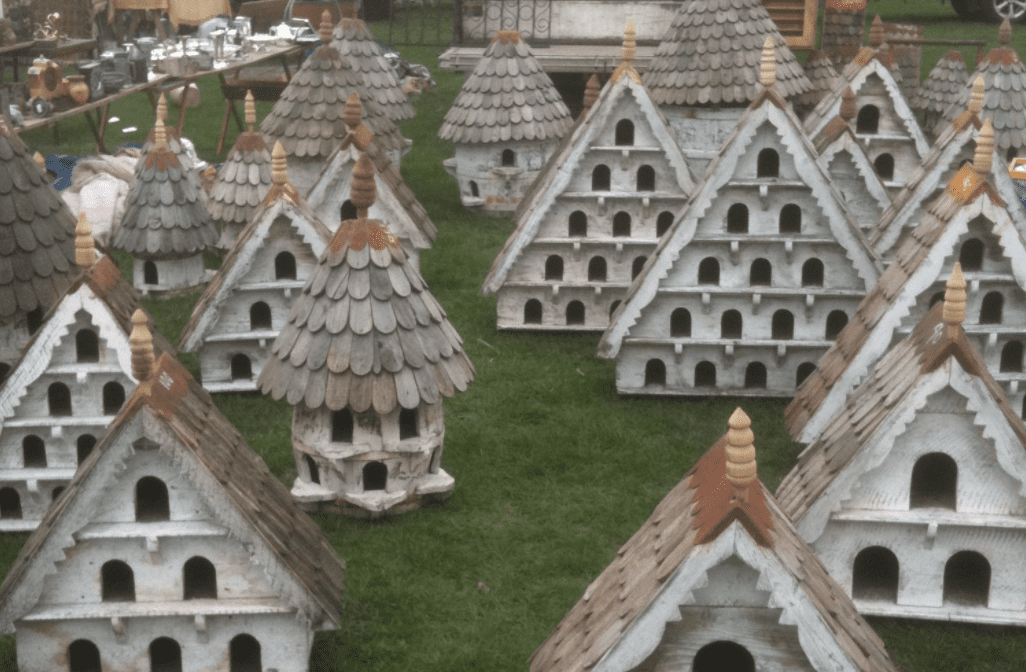
by Pigeon Patrol | Dec 27, 2020 | 4-S Gel Bird repellent, Animal Deterrent Products, Bird Deterrent Products, Bird Netting, history of pigeons, Pigeons
What Are Dovecotes?
Dovecotes, Commonly known as:
Pigeon houses, columbaria, culver houses, pigeon cotes, dove houses
A dovecote or dovecot, doocot or columbarium is a structure intended to house pigeons or doves. Dovecotes may be free-standing structures in a variety of shapes, or built into the end of a house or barn. They generally contain pigeonholes for the birds to nest.

Widcombe Manor Farm Dovecote
Dovecotes were a common sight throughout Britain and across mainland Europe between the 16th and 19th centuries, but today few remain and of those that do, many are now in ruins. Dovecotes are specially constructed pigeon houses where pigeons were kept for a variety of purposes, but in the main as a source of food. Other uses for the domesticated pigeon were as quarry for falconry and as a target for shooting matches that were common in the 19th century and in which as many as 120 birds were shot for sport in each match. Dovecotes can be constructed of virtually any material (although early dovecotes were constructed exclusively of stone) and can be free-standing structures or provided as part of an existing structure or as a ‘lean-to’ addition.

Ancient Dovecote at Embleton
The earliest dovecotes may have been introduced to Britain by the Romans based on the fact that pigeon rearing was common in Italy with dovecotes being provided close to villas and farmsteads for the purpose of food. Over half a century ago C.D. Chalmers suggested that a number of unexplained foundations on Roman sites in Britain were the remains of ancient dovecotes, but his views have never been corroborated. Due to the lack of any firm evidence that dovecotes were introduced into Britain by the Romans it is likely that it was the Normans that first introduced the dovecote and as a result domesticated the rock dove from which the feral pigeon of today is descended.
One of the earliest British examples is believed to be a 12th century dovecote that was uncovered during archaeological works in Raunds, Northamptonshire. This early dovecote is circular and commonly known as a ‘rubblestone dovecote’. A number of these early rubblestone dovecotes, dating back to the 12th and 13th centuries, have been uncovered throughout southern England in recent years and with quite a significant geographical spread ranging from Devon in the south-west through to Lincolnshire in the east. These early dovecotes were built mainly to service the culinary needs of monasteries, castles and manors but were the sole preserve of the wealthy and almost certainly beyond the means of the poor. In Medieval and Norman times the building of a dovecote was a feudal right restricted to lords of the manor, abbots and barons with these privileges eventually extending down to the humble parish priest. Today very few of these structures remain intact.

Much Marcle Dovecote
It was in the 16th century that dovecotes became popular in Britain with a huge variety of different designs and types being constructed. Ancient dovecotes are believed to be round in shape but later in the 17th century square, rectangular and octagonal dovecotes were built, some with incredibly intricate designs. Further designs and types include ‘lectern’ dovecotes, ‘in and out’ dovecotes, ‘polygon’ dovecotes and even caves have been adapted for the keeping of domesticated pigeons. Lectern dovecotes are shaped like a reading desk, hence their common name, and normally consisted of a 4-sided building with a single pitched roof with raised parapet walls on 3 sides. In and out dovecotes, sometimes known as Irish dovecotes, consisted of tiers of breeding cubicles together with perching ledges that were built into the exterior wall of a house or building. Polygon dovecotes (polygon, in this context, meaning a building with more than 5 sides) are more often than not octagonal structures ranging dramatically in size and often housing large numbers of birds. Caves, both coastal and inland, have been used to house domestic pigeons but their use is less common than the conventional dovecote.

Breeding Cubicles,
Shobdon Court Dovecote
The interior of a dovecote is usually a large open space with the breeding cubicles or ledges being offered in rows around the internal walls. Pigeons would enter the dovecote in a variety of ways, depending on the size, shape and type of structure, with the most common entry/exit point (known as the flight entrance) being provided beneath a cupola on the roof of the structure. The birds would be encouraged to roost and breed within the structure and as pigeons are quite prolific breeders, bringing up to 8 young into the world each year, competition for breeding cubicles would be high.
As the main purpose of a dovecote was to provide food, and as the pigeon squab (or chick) was seen as a delicacy, squabs would be ‘farmed’ when they achieved a certain age and size (normally 4 weeks of age). In the 16th century eating pigeon meat became much more popular with ‘pigeon pie’ becoming a delicacy and often described as ‘food fit for kings’ – this rather dispels the myth that pigeons are disease carriers! As a result of this popularisation, pigeon meat not only graced the tables of the monarchy and the rich, it became a standard food for the masses and it was commonly said that every family should eat squab at least once a week. Some squab ‘farms’ were believed to house anything from 10,000 to 30,000 birds to satisfy this demand.

Cross-section of
Classic Dovecote
In order to access breeding cubicles and remove squabs an ingenious system had to be designed based on the inaccessibility of nests and the sheer height and size of some of the larger dovecotes. For smaller dovecotes a free-standing ladder was used for access but for larger structures a ‘potence’ was used, although more commonly for round rather than square or rectangular dovecotes. The potence consisted of a large vertical wooden pole situated in the centre of the interior and which was pivoted both at the base and at the top, allowing the pole to rotate 360°. Several lateral arms were joined to the vertical post at right angles to which ladders were attached. As the main pole was rotated the lateral arms and ladders also rotated around the interior allowing access to all the breeding cubicles.

Dovecote at Godminster
Although the provision of food was the main purpose of the dovecote, there was one interesting and highly valued by-product that had a dual purpose – pigeon guano! Pigeon guano was, and still is, considered to be one of the finest fertilisers in the world and was a highly prized commodity as a result. In the Middle East (where eating pigeon flesh was forbidden) dovecotes were built simply to provide manure for growing fruit and this practice continued for centuries. In France, Italy and Spain guano was used extensively on hemp crops and for the fertilisation of vineyards and in England it was considered to be an extremely potent manure. It was often said that pigeon guano was worth 10 loads of other sorts (manure).

Dovecote at Weetwood Hall
In the 16th century pigeon guano was sought after for a different reason – it was found to contain saltpetre, which was used for the manufacture of gunpowder. This secret was brought across from Germany and sold for a payment of £300, which would have been a huge sum in those days. This dramatically changed the role of the dovecote in light of the fact that guano was potentially valued more highly than the birds themselves and to protect this resource armed guards were often placed outside dovecotes to stop thieves stealing the guano. Production of saltpetre from pigeon guano ended in the late 18th century when it was found to be naturally occurring in South America.

Dovecote at Kings Pyon
Although the commercial use of dovecotes died out in the 19th century with many magnificent examples being allowed to fall into disrepair due to neglect, they have experienced something of a re-birth in the 21st century with dovecotes being used for the control of the feral pigeon, a direct descendent of the domesticated dovecote bird. Dovecotes and pigeon lofts are now commonly used for the control of the feral pigeon in towns and cities all over the world, with the notable exception of the USA.
The principle of using a dovecote (or pigeon loft) as a pigeon control option was pioneered by the Pigeon Control Advisory Service International (PiCAS International) and can be loosely described as a form of birth control. Pigeons are encouraged into a dovecote by the provision of a dedicated public feeding area, sited immediately beside the dovecote, where the public will be asked to feed the birds at the same time as being asked to cease feeding elsewhere. Pigeons will then take up residence in the dovecote (based on the close proximity of a good reliable food source) and once breeding starts all eggs are removed, as laid, and replaced with dummy eggs. Where a pigeon loft is used for the purpose of control rather than a dovecote the facility would be sited on the roof of a building or even within the roof of a building, rather than at ground level. Pigeons would be encouraged into the loft by the provision of food and once breeding starts eggs would be removed and replaced in the same way as with a dovecote facility.

Bailiffscourt Dovecote
This humane, effective and cost effective method of control is rapidly replacing the extreme use of lethal control, commonly used to control pigeon populations in the 21st century. Schemes using dovecotes, or artificial breeding facilities as they are now commonly known, have achieved staggering results where provided as a control option, often reducing pigeon flock size by as much as 50% and in some cases by as much as 95%. Pigeons will readily use a dovecote facility for the purposes of breeding and providing that some basic rules are followed this method of control, based on a concept that is more than 1000 years old, will provide any property owner or local government body with a cheap, popular and highly effective means of controlling feral pigeon populations. Source
About Pigeon Patrol:
Pigeon Patrol Products & Services is the leading manufacturer and distributor of bird deterrent (control) products in Canada. Pigeon Patrol products have solved pest bird problems in industrial, commercial, and residential settings since 2000, by using safe and humane bird deterrents with only bird and animal friendly solutions. At Pigeon Patrol, we manufacture and offer a variety of bird deterrents, ranging from Ultra-flex Bird Spikes with UV protection, Bird Netting, 4-S Gel and the best Ultrasonic and audible sound devices on the market today.
Contact us at 1- 877– 4– NO-BIRD, (604) 585-9279 or visit our website at www.pigeonpatrol.ca
Pigeon / Pigeon Patrol / Pigeons Roosting / Vancouver Pigeon Patrol / Bird Control / Surrey Pigeon Control / Pest / Vancouver Pigeon Blog / Birds Inside Home / Pigeons in the cities / Ice Pigeons/ What to do about pigeons/ most common types of sparrows , Damages Caused by Sparrows, How To Keep Raccoons Away, de-fence, What Are Dovecotes?


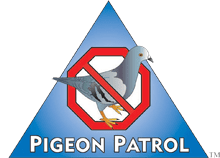







 Give Yourself Inside Access
Give Yourself Inside Access



 Widcombe Manor Farm Dovecote
Widcombe Manor Farm Dovecote
 Ancient Dovecote at Embleton
Ancient Dovecote at Embleton
 Much Marcle Dovecote
Much Marcle Dovecote
 Breeding Cubicles,
Breeding Cubicles, Cross-section of
Cross-section of Dovecote at Godminster
Dovecote at Godminster
 Dovecote at Weetwood Hall
Dovecote at Weetwood Hall
 Dovecote at Kings Pyon
Dovecote at Kings Pyon
 Bailiffscourt Dovecote
Bailiffscourt Dovecote